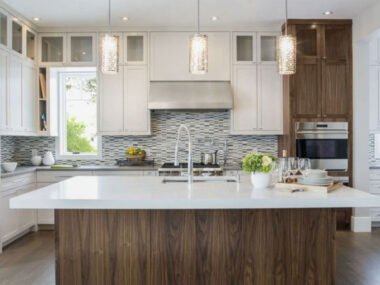In today’s design world, where sustainability and aesthetics go hand in hand, the wood accent wall has become a timeless yet forward-thinking choice for homeowners and designers alike. When crafted from sustainable wood panels, these striking focal points not only elevate interior spaces but also contribute to environmentally conscious living. Whether you’re aiming for a rustic retreat, a modern statement, or a warm and inviting ambiance, a wood accent wall offers a versatile and eco-friendly solution that’s as beautiful as it is responsible.
In this blog, we’ll explore the art of designing wood accent walls with sustainable wood panels, highlighting material choices, design considerations, and creative inspiration to transform your space while honoring the planet.
The Appeal of the Wood Accent Wall
A wood accent wall serves as a captivating focal point, adding texture, warmth, and character to any room. From living rooms and bedrooms to offices and commercial spaces, wood panels can introduce an organic, grounding element that enhances the visual interest of an interior design. Unlike paint or wallpaper, wood infuses a sense of depth and authenticity that few materials can match.
However, as the demand for wood accent walls grows, so does the importance of making sustainable choices. Sourcing wood responsibly ensures that forests are preserved, ecosystems are protected, and future generations can enjoy the natural beauty of wood in their homes.
Choosing Sustainable Wood Panels for Your Accent Wall
When it comes to creating an eco-friendly wood accent wall, material selection is key. Here are some sustainable options to consider:
- Reclaimed Wood
Reclaimed wood tells a story. Salvaged from old barns, factories, or shipping pallets, this material gives new life to timber that might otherwise end up in landfills. Its weathered texture, rich patina, and natural imperfections lend an authentic, rustic charm to any space. Choosing reclaimed wood reduces the need for new lumber, lowering your carbon footprint while adding character and history to your wood accent wall.
- FSC-Certified Wood
The Forest Stewardship Council (FSC) certification ensures that wood products come from responsibly managed forests that meet strict environmental and social standards. FSC-certified wood panels provide peace of mind, knowing your wood accent wall supports ethical forestry practices and helps maintain biodiversity.
- Bamboo Panels
Bamboo, a rapidly renewable resource, is another excellent choice for a sustainable wood accent wall. Technically a grass, bamboo regenerates quickly without replanting, making it a low-impact alternative to traditional hardwoods. Bamboo panels are available in a variety of finishes and can complement both contemporary and traditional interiors.
- Thermally Modified Wood
Thermally modified wood is treated with heat and steam, enhancing its durability, stability, and resistance to decay, without the use of chemicals. This process extends the life of wood products and makes them more suitable for indoor and outdoor applications, including wood accent walls.
Design Ideas for Wood Accent Walls
A wood accent wall can be as subtle or dramatic as you like, depending on your design vision. Here are a few inspiring ideas to spark your creativity:
- Chevron or Herringbone Patterns
For a dynamic, eye-catching effect, arrange wood panels in a chevron or herringbone pattern. This geometric approach adds a touch of modern sophistication while allowing the wood’s natural grain and texture to shine.
- Vertical Planking for Height
Install wood panels vertically to create the illusion of higher ceilings and a more spacious room. This technique works particularly well in smaller spaces, such as bathrooms or entryways, where you want to maximize visual impact.
- Rustic Reclaimed Wood for Warmth
Incorporate reclaimed wood with a weathered finish for a cozy, rustic aesthetic. Pair it with soft textiles, natural fibers, and neutral color palettes to create a welcoming and harmonious atmosphere.
- Dark Wood for a Moody, Sophisticated Look
Deep, rich wood tones like walnut or ebony can lend a sense of drama and sophistication to a space. Consider using a dark-stained wood accent wall as a backdrop for minimalist furnishings and bold artwork.
- Mixed Wood Tones for a Modern Twist
Combine different wood species and finishes to add depth and dimension to your wood accent wall. This layered approach works especially well in contemporary interiors, where contrast and variation are key to creating visual interest.
Practical Considerations for Installation
Designing a wood accent wall with sustainable wood panels requires careful planning to ensure a flawless result. Here are a few practical tips to keep in mind:
- Acclimate the Wood: To prevent warping or gaps, allow the wood panels to adjust to the room’s temperature and humidity for at least 48 hours before installation.
- Prepare the Surface: Ensure the wall surface is clean, dry, and level. This creates a stable foundation for your wood panels.
- Use Eco-Friendly Adhesives and Finishes: Opt for low-VOC (volatile organic compound) adhesives and finishes to maintain indoor air quality and minimize environmental impact.
- Consider Maintenance: Some wood species and finishes may require periodic maintenance to retain their beauty. Plan for regular dusting, occasional refinishing, or touch-ups as needed.
The Environmental Benefits of Sustainable Wood Accent Walls
Beyond aesthetics, incorporating sustainable wood panels into your wood accent wall design has a positive impact on the environment:
- Carbon Sequestration: Wood naturally stores carbon, helping to mitigate climate change. Using wood products responsibly locks carbon into your home’s built environment for decades.
- Waste Reduction: Choosing reclaimed or recycled wood diverts materials from landfills and reduces demand for virgin timber.
- Resource Conservation: Sustainable forestry practices ensure that trees are harvested responsibly, promoting forest regeneration and preserving ecosystems.
- Healthier Indoor Air Quality: Natural wood panels, when treated with non-toxic finishes, contribute to a healthier living environment by minimizing off-gassing and chemical emissions.
Final Thoughts
Designing a wood accent wall with sustainable wood panels is more than just a design trend—it’s a statement of values. It reflects a commitment to beauty, craftsmanship, and environmental stewardship. By thoughtfully selecting materials, considering design aesthetics, and embracing eco-friendly practices, you can create a space that is both visually stunning and planet-friendly.
Whether you opt for reclaimed barn wood, FSC-certified panels, or sleek bamboo planks, a wood accent wall can transform your home into a haven of style, sustainability, and warmth. Let your wall tell a story—one that honors nature, supports ethical practices, and inspires a greener future.










